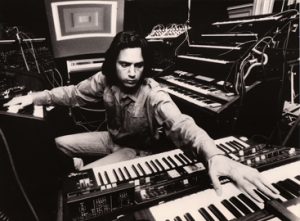
BY NECDET BALKIR GÖKA (ME/IV) balkir.goka@ug.bilkent.edu.tr
Let’s start with asking a basic but very fundamental question: What is sound? Sound is a vibration that propagates as a wave of pressure through a transmission medium. The sound that we can hear is our ability to receive these pressure waves in a certain frequency range. Every musical note that we hear in any music arrangement has a corresponding physical explanation. Acoustic musical instruments allow us limited freedom to play with sounds because they are designed in such a way that they only create specified vibrations with certain frequencies and amplitudes. Also, the arrangement of musical notes in certain ways creates scales.
At this point, the magical and fascinating effects of music start, because with certain arrangements of sounds, we can create emotional responses in the human brain. This situation is expressed in this way in popular culture: “Music heals the soul.” But assuming that there is no soul and our emotional responses are simply biological (and it is not absurd to assume this, because the existence of the soul has not been proven), music (a certain arrangement of sound waves) has a fascinating impact on our biological systems.
But there is still one more parameter in the equation. For example, the same musical note coming from, say, wood and from metal is a different sound, even though physically it is the same pitch. Therefore, the same note can be heard in different ways, and hence the way in which we get the sound also affects our perception. Since, as stated above, acoustic instruments like the piano, guitar and trumpet have limited sound spectrums, musicians eventually began to search for new sounds. As a result, with the help of scientific discoveries and technological momentum, synthesizers were developed. With these instruments, musicians were enabled to alter the physical properties of sound and create new sound waves. Synthesizers started a revolution in the music industry, because now everyone was able to make their own instrument and play with it. But one genius in particular has used this technology to create enchanting sounds and compose impressive songs: Jean-Michel Jarre.

Jarre is a French composer. It is very hard to categorize his music in a specific genre, because you can hear classical, jazz, blues and rock influences in his works. But this is not the point that I want to emphasize. As a composer, he creates sound to reflect and stimulate the desired emotion. It is like painting. You have to choose or create the correct color to make the observers “feel” the painting. By adjusting new sounds according to the rules of physics, Jarre obtains suitable tones for his compositions. Today’s technology offers a lot of great software to alter sound, but at the time he recorded one of his masterpieces, “Oxygen,” there was no built-in software; you had to manually adjust the physical properties of sound.
When you listen to Jarre’s music, you will hear different layers of sound. Most of the time there is a filler in the background, which provides depth to the song. It often contains repeated melodies in a bass tone. On top of this comes the main rhythmic melody, which starts to create the atmosphere. Finally, there is the lead melody, which tells you the story. But this is a very simplified understanding of his music; it actually has more than three layers of sound.
Through Jarre’s music, transcendent identity can travel in space, come back to earth, find the center of the world and return to your own consciousness. With the start of each song, you will hear repeated sounds, and these will calibrate your brain to the oncoming experience. The repeated sounds enable you to fall into a trance, and after that, with the addition of new melodies, you will find yourself in the world of Jean-Michel Jarre.
There are also other very talented musicians and bands, like Vangelis, Kitaro, Tangerine Dream and Engima, who use electronic instruments in a similar way. Each of them creates their own sound, and there are limitless combinations of sound that a musician can create. This actually makes production more difficult, because acoustic instruments specify your boundaries in terms of sound, and so you have to compose within the limits of those instruments’ capabilities, while there are no limits in sound production when using electronic instruments. Most often, boundaries can help you construct your ideas and show you the way. But if there are no boundaries, everything depends on your imagination. At the same time, although today’s popular music uses electronic sounds extensively, I do not think that these songs are the products of true imagination. They all sound similar to each other and, as a result, are destined to die. However, if producers are willing to go in pursuit of new sounds, each work will be unique and will be listened to forever.
